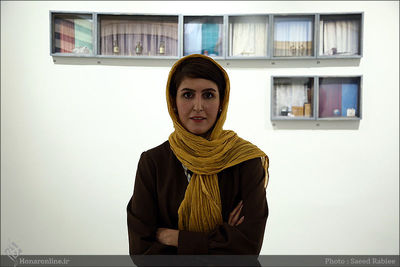In an interview with HonarOnline, Shadpour said about the formation of this collection: I was admitted to a residence two years ago that was delayed due to the corona, and this year I was able to go to Austria to spend it. I defined my project from the beginning in such a way that I would walk around the city of Gross like a stroller and work according to the feeling I get from the city.
Shadpour continued: "This project was formed based on wandering in the city, and after three weeks of walking and looking at the city and the people, I was able to take my own photos." Gross is one of the largest cities in Austria, but despite being a student city, it is a secluded city and for me it was a different city from Tehran where I live and I tried in my photos to this empty space and atmosphere of silence in the city. I have to pay.

Shadpour added: "Next to each photo of the city, I put another photo, the subject of which is red and white plastic strips that I see in different parts of the city." These strips, which remain in the space after the completion of urban projects and are usually tied to trees and plants, reminded me of the Austrian flag and I chose it as a detail of the city. She said that Polaroid's photo was closer to what he had received from the city.
She used Polaroid's camera for photography. For this purpose, I brought two projects from Tehran, one of which is the car cover project and the other is the Ekbatan project. Shadpour continued: "During my stay in Austria, the city of Gross was faced with a three-week quarantine, and for this reason I was mostly at the residence." During this time I photographed the space, the objects around me and myself, and from these photos I made a photobook that is presented in the exhibition. Along with this work, there are headphones in which the sound of conversations I had with family and friends during this period with Tehran can be heard.

